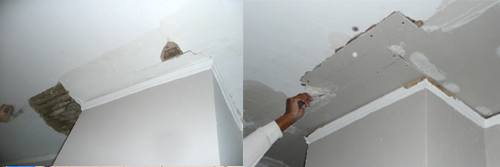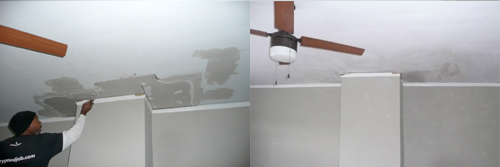Plaster and Drywall Repair
Old plaster may seem beyond repair, but total replacement is expensive,
and saving the old surface has its advantages. All old plaster walls develop
cracks over time. This occurs when the plaster breaks loose from the supporting
wood lath. Simply filling the crack, which is an acceptable practice, does
not address the cause of the crack. The “key,” which is the excess
plaster that is forced through the openings between lath strips, has broken
away and may allow the plaster to actually pull away from the wall lath
and form bulges noticeable on the surface. The plaster should be pulled
back to the lath wall itself, often employing special screws and washers
that are finally covered on the surface with compound to give a smooth surface.


Repair
After the cause of the damage has been determined and eliminated, all loose plaster is removed from the wall surface. Drywall tape is applied to the area of the crack and drywall compound applied to fill in the crack. After drying, the compound is sanded and additional coats of compound added to create an even surface. The new surface is then painted with primer and caulked before the finish coat of paint is applied.

